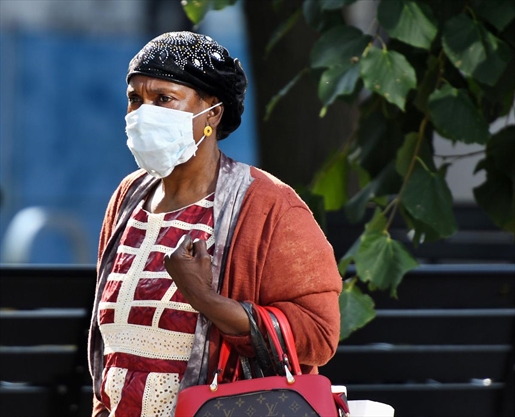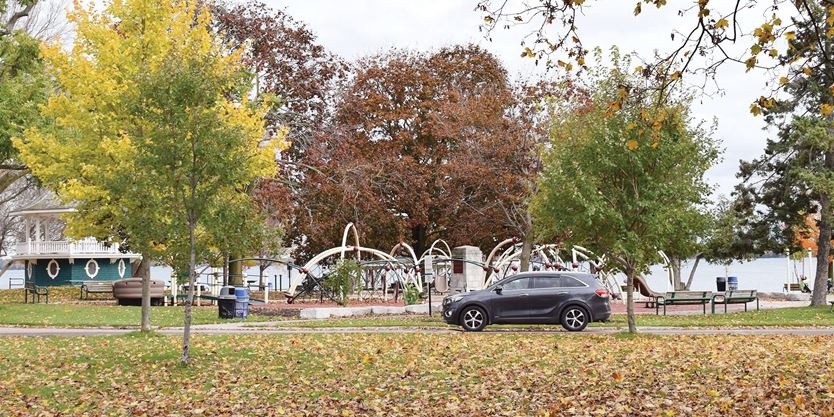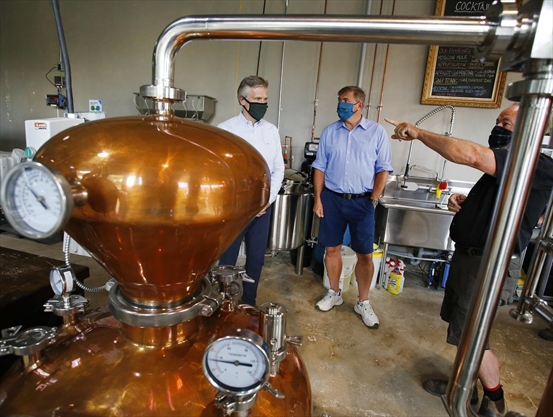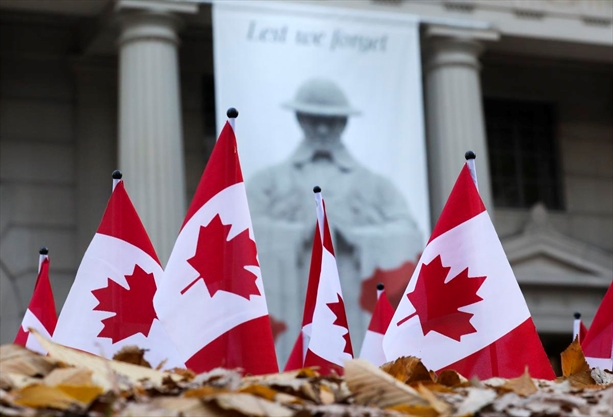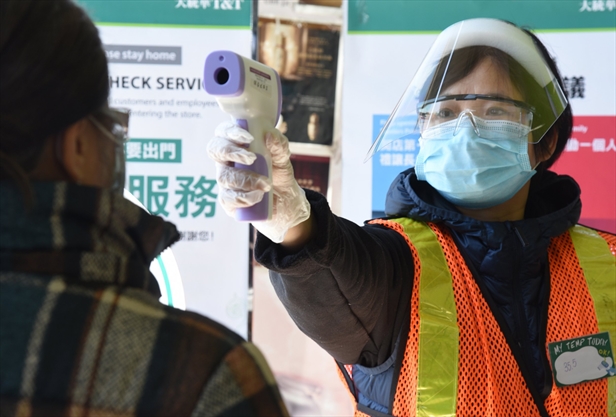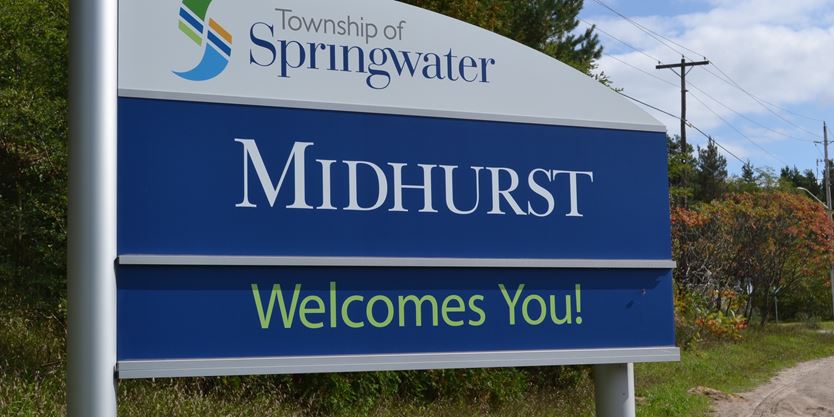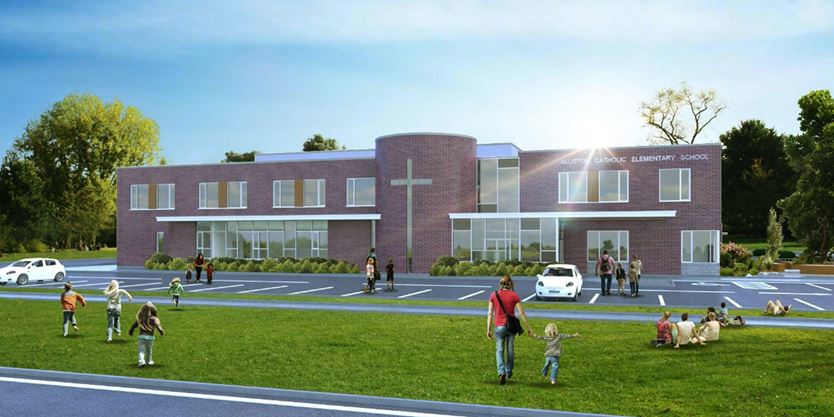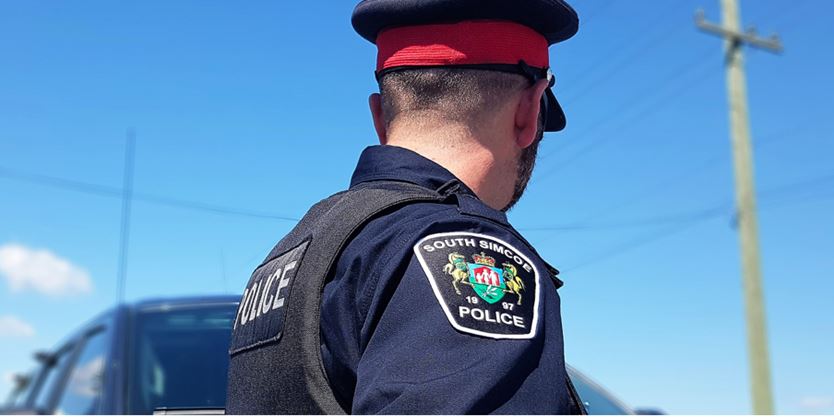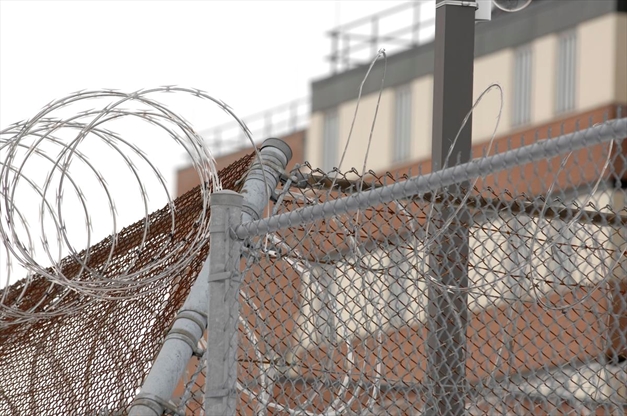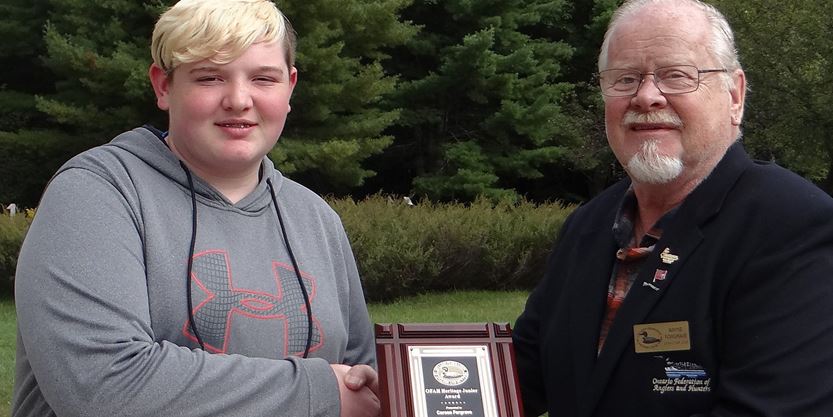Remembrance Day services will look much different this year due to restrictions but many in Canada and around the world are finding ways to honour war veterans.
Here is how Remembrance Day is being marked in this country and around the world:
6:39 p.m.: Celebrations marking Veterans Day gave way to sombre virtual gatherings Wednesday, with many of the nation’s veterans homes barring visitors to protect their residents from the surging coronavirus that has killed thousands of former members of the U.S. military.

Cemeteries decorated with American flags were silent as well, as many of the traditional ceremonies were cancelled. With infections raging again nationwide, several veterans homes are fighting new outbreaks.
In New York City, a quiet parade of military vehicles, with no spectators, rolled through Manhattan to maintain the 101-year tradition of veterans marching on Fifth Avenue. President Donald Trump took part in an observance at Arlington National Cemetery, while President-elect Joe Biden placed a wreath at the Korean War Memorial in Philadelphia.
More than 4,200 veterans have died from COVID-19 at hospitals and homes run by the Department of Veterans Affairs, and nearly 85,000 have been infected, according to the department.
5:28 p.m.: The sacrifices of Canadians past and present were honoured alongside messages of hope Wednesday as small crowds braved the pandemic to mark Remembrance Day across the country and thousands more paid homage from their own homes.
Past ceremonies have largely focused on the hundreds of thousands of Canadians who fought in the two great wars, and this year was the 75th anniversary of the end of the Second World War.
Still, with eight members of the Canadian Armed Forces having died while on duty this year, and thousands more serving in long-term care homes battered by COVID-19, commemorations had an added level of resonance.
“We feel it as an organization, as an institution, when we lose people,” outgoing chief of the defence staff Gen. Jonathan Vance told The Canadian Press.
“But we must be resilient and resolute and be able to carry on, because the defence of Canada happens here at home and abroad.”
During his annual Remembrance Day sermon at the National War Memorial in Ottawa, Rabbi Reuven Bulka praised members of the Canadian Armed Forces for not flinching when called upon to serve in long-term care facilities struggling to contain outbreaks.
“Who responded without hesitation? Without being deterred by the potential dangers they faced? Our soldiers. And who once again delivered in a time of national crisis? Our soldiers,” he said.
5:26 p.m.: The federal Liberal government has tapped a former army officer as Canada’s new veterans ombudsman, six months after the last watchdog quit amid frustrations over the post’s lack of independence
Retired colonel and Afghanistan war veteran Nishika Jardine is the fourth person to serve as the veterans ombudsman and the first woman to fill the post since it was created in 2007.
Veterans Affairs Minister Lawrence MacAulay announced Jardine’s appoint on Wednesday as Canadians marked Remembrance Day with scaled-back ceremonies across the country due to COVID-19.
“The veterans ombudsperson plays a vital role in raising awareness of the needs and concerns of both individual veterans and the community as a whole,” MacAulay said in a statement.
“I’m confident that veterans across the country will be well-served by retired colonel Jardine. I look forward to working with her to improve the lives of our veterans and their families.”
Jardine, who was born in India and retired from the Canadian Armed Forces last year after 37 years in uniform, succeeds Craig Dalton, who quit suddenly in May after only 18 months on the job.
Dalton at the time expressed some frustration with the office’s lack of independence from the federal government.
Those concerns largely echoed complaints from the veteran community, with many expressing a lack of trust for the office given that the ombudsman reports to the minister of veterans affairs rather than Parliament.
There have also been concerns about the office’s narrow mandate, which largely focuses on reviewing individual cases in which veterans are denied benefits rather than studying and addressing systemic problems.
A report commissioned by Veterans Affairs Canada and released earlier this year described the restrictions on the ombudsman’s mandate as “key barriers” to the office’s ability to help many veterans in need.
Veterans Affairs Canada has said it plans to conduct its own assessment but has not said when it will be complete.
Jardine’s appointment comes as tens of thousands of veterans have been left waiting months and sometimes years to find out whether they qualify for federal benefits and services because of service-related injuries.
The Liberal government has promised to hire more staff to deal with the backlog, but MacAulay said this week that he does not expect it to be reduced substantially until 2022.
4:43 p.m.: The federal government is tapping a former army officer as Canada’s new veterans ombudsman, six months after the last watchdog quit.
Retired colonel Nishika Jardine is the fourth person to serve as the veterans ombudsman, and the first woman to fill the post since it was created in 2007.
She succeeds Craig Dalton, who quit suddenly in May after only 18 months on the job, during which he expressed some frustration with the office’s lack of independence from the federal government.
A report commissioned by Veterans Affairs Canada and released earlier this year echoed those concerns and also flagged problems with the watchdog’s limited authority.
The government has said it plans to conduct its own assessment, but has not provided a timeline for when it will be complete.
Jardine’s appointment coincides with Remembrance Day, with ceremonies across the country scaled back or in some cases cancelled because of the COVID-19 pandemic.
4:25 p.m.: Every Remembrance Day, a small memorial to Pte. William Doheney of the Royal Newfoundland Regiment goes up in the window of a light blue row house at 17 Prospect St. in St. John’s, N.L.
According to the plaque leaning against the window beneath a picture of the young soldier, Doheney was just 24 when he and more than 700 other men from the province died on July 1, 1916 at Beaumont-Hamel in northern France.
St. John’s Mayor Danny Breen’s uncle Jack Breen was also among the dead. On Wednesday morning, just after he’d laid a wreath at the foot of the War Memorial as part of the city’s Remembrance Day ceremony, Breen stood looking at Doheney’s memorial.
He grew up in the house next door. Many men from the neighbourhood died at Beaumont-Hamel, Breen said.
He’s been attending the Remembrance Day ceremony at the National War Memorial in St. John’s for as long as he can remember, honouring those young men from his neighbourhood and his uncle. “It’s a privilege and an honour to lay a wreath,” he said.
As in the rest of Atlantic Canada, the Remembrance Day crowd in St. John’s was much smaller this year, but the gravity of the day remained. Residents were asked to observe their moments of silence from their doorways, to be safe in a global pandemic.
Still, onlookers gathered along the downtown streets flanking the monument to pay their respects to soldiers lost in war. They wore masks as they bowed their heads, standing apart from one another.
Halifax had a similarly reduced ceremony at the Grand Parade in the city’s core.
During the ceremony, Glen Leduc, a zone commander with the Nova Scotia/Nunavut Royal Canadian Legion and the master of ceremonies for Wednesday’s event, thanked the people of Halifax for marking Remembrance Day from their homes.
But about 150 masked onlookers stood at the east and west ends of Grand Parade, watching the ceremony behind a barrier of caution tape.
The ceremony in Charlottetown was also scaled back due to COVID-19, which master of ceremonies Maj. Rev. Tom Hamilton said was an echo of times past. “One hundred years ago, as soldiers returned from the First World War, many of them faced a new enemy in the form of the Spanish flu pandemic,” he noted.
“Those watching on televisions and our small group here are united in our resolve and commitment to honour our veterans and to remember the sacrifices made by those who served in time of war, which helped secure our freedoms,” he said.
In New Brunswick’s capital, a small group sat in front of the cenotaph in Fredericton. The wreaths at the monument’s base were placed ahead of time in order to avoid crowding at the site.
Back in Halifax, Eric Newbould sat with his youngson Cooper and his son’s best friend on Citadel Hill as they waited to hear the noon cannon blast before entering the army museum there.
1 p.m.: The – whose nickname and emblem is rooted in the Canadian military – couldn’t visit Canadian veterans in person on Remembrance Day, due to COVID restrictions.
But they could do so virtually.
Mitch Marner, Jake Muzzin and former captain Darryl Sittler were part of a virtual Q and A, answering questions submitted by veterans at Sunnybrook.
“We can’t thank you enough for the service you provide this country and allow us to go out and play a game (and) for what we have in this country,” said Muzzin.
Read more:
12 p.m.: It was a to remember at Queen’s Park — just not in person.
Lt.-Gov. Elizabeth Dowdeswell and Premier Doug Ford unveiled a new memorial on Wednesday to commemorate the 158 Canadian Armed Forces personnel killed in the war in Afghanistan.
But because of the COVID-19 pandemic, attendance on the south lawn of the legislature was strictly limited to a smattering of journalists, officials and military personnel.
Due to the need for safe physical distancing, people were encouraged to watch the sombre annual ceremony on television or via online livestreaming.
Complementing the black granite veterans’ monument built in 2006, the new memorial features a zigzagging bronze ribbon to symbolize Afghanistan’s mountainous terrain.
It includes a stone from an inukshuk dedicated to the fallen, which was erected by Canadian soldiers at the Kandahar air field.
Dowdeswell acknowledged that “Remembrance Day 2020 takes place in strange and uncertain circumstances.
“We’re in the midst of a global pandemic. We are all vulnerable and must remain vigilant,” she said.
“As we begin the rebuilding and dare to dream of a better normal, those who have served in our armed forces provide inspiration.
“Working together in common cause, members of the Canadian forces have been there for us every step of the way: on the front lines, in long-term care homes, in cities and towns as reassuring leaders and neighbours.
“Today, we’ve given up coming together in large numbers. We do so to protect others. It’s a small, but important gesture, through which we actually respect and honour the legacy of those who sacrificed for us.”
10 a.m.: When a dawn fog lifted over countless World War I cemeteries and monuments in Belgium and France Wednesday, the pandemic ensured that the remembrance of the millions killed in the 1914-1918 conflict was one of the loneliest ever.
Under the Menin Gate in western Belgium’s Ypres, at the heart of the blood-drenched Flanders Fields, usually thousands gather to pay tribute. On Wednesday, only half a dozen were allowed at the monument carved with the names of more than 54,000 fallen British and Commonwealth soldiers who have no known grave.
The nearby Flanders Field American Cemetery and the Commonwealth Tyne Cot were all closed due to pandemic precautions.
Somber remembrances were held from London to Paris and at many places along the former Western Front, where Ypres saw some of the bloodiest battles in a war remembered for brutal trench warfare and the first use of chemical weapons.
In Paris, President Emmanuel Macron paid tribute to wartime Prime Minister Georges Clemenceau at a statue in his honour, then laid a wreath of red, white and blue flowers representing the tricolour French flag at the Tomb of the Unknown Soldier, and re-ignited the flame.
Also, to mark 100 years since an unidentified soldier killed at Verdun was buried beneath the Arc de Triomphe, French soldiers organized a memorial run from Verdun to Paris to pay homage to all French soldiers killed in conflict. They ran for five days, dressed in WWI-era uniforms, with weapons slung over their backs.
9:52 a.m.: Philip Favel, 98, has never stopped fighting for Indigenous veterans since he landed on Juno Beach.
On Sunday, the Canadian War Museum unveiled a portrait honouring him for Indigenous Veterans Day. His granddaughter, Nadine Favel, said he’s the oldest living Indigenous Second World War veteran in Canada.
She said he watched the ceremony from his home on the Sweetgrass First Nation near the Battlefords, commemorating a lifetime he spent pushing for fair compensation for Indigenous Second World War veterans.
Favel represented him at the ceremony in Ottawa. The event featured Canada’s top soldier, Gen. Jonathan Vance, and Assembly of First Nations National Chief Perry Bellegarde, who noted returning Indigenous soldiers didn’t receive equal benefits upon returning home.
9:36 a.m. Quinquin, his code name, followed orders, crossing enemy lines to pass messages if needed. In the end he was killed by friendly fire, at the age of 6, .
Marcel Pinte has only recently been getting his due. Just last week his name was inscribed on a monument to the war dead in Aixe-sur-Vienne, a town of less than 6,000 in central France, near his zone of operation. He is among the fallen being honoured Wednesday, when France commemorates the Nov. 11, 1918 armistice ending World War I and pays homage to all those who have died for the nation.
The little boy lived at the heart of the “army of the shadows,” as Resistance fighters were known, led from London by Gen. Charles de Gaulle and on the ground in his patch of France by his father, Eugene Pinte, a local Resistance chief who set up an operations centre at a farm outside Aixe-sur-Vienne. His farmhouse received coded messages from London, and parachute drops of supplies in a field nearby. A street was named after the father, code-named Athos, four years ago for leading the liberation of the town.
Marcel, the youngest of five children, was put to work helping fighters with an array of tasks. He could, for instance, slip away to nearby farms to pass messages, according to accounts published by a relative, Alexandre Bremaud.
8:41 a.m. As the sun breaks over the central Newfoundland town of Gander on Remembrance Day, the graves of servicemen buried in the town’s Commonwealth War Graves site .
And those fallen souls of the Second World War will not be alone.
Beneath the sounds of the nearby Gander International Airport, members of the Royal Canadian Legion Branch 8 in Gander will be on hand to remember their sacrifice.
Albeit, the remembering party will be smaller than in previous years due to the COVID-19 pandemic and the regulations that surround social gatherings.
Still, they will be there walking amongst the 100 grey tombstones, each adorned with a cross, their name and rank, and the insignia of their respective branch of the military.
There will be wreaths laid at the base of a large stone cross that reaches toward the sky.
“We ensure we remember and never forget the people buried there,” said Nelson Granter, the president of Royal Canadian Legion Branch 8.
8:24 a.m. President Donald Trump will participate in the Veterans Day observance at Arlington National Ceremony on Wednesday, emerging in public for the first time since his failed reelection bid to take part in the annual presidential rite.
Trump has spent the last several days holed up at the White House tweeting angry, baseless claims of voter fraud after his election loss.
8:22 a.m. The Trudeau government is promising millions in emergency funding to help the Royal Canadian Legion and other veterans’ groups battered by the COVID-19 pandemic.
Yet the promised funds fall short of what groups had requested, and the government offered no new plans for eliminating the barriers and long waits that thousands of disabled veterans have been facing in trying to access federal benefits and services.
Officials also confirmed that none of the funding will go to the Juno Beach Centre, the museum built on the beach in France where Canadian soldiers went ashore on D-Day, and which has been facing its own pandemic-related financial crunch.
Prime Minister Justin Trudeau took it upon himself on Tuesday to announce that the government would be providing $20 million in aid to the legion and other veterans’ groups whose finances have dried up due to the pandemic.
“Our veterans served Canada with honour and valour,” Trudeau said during one of the federal government’s regular updates on the COVID-19 pandemic in Canada. “They stepped up for us and now we must step up for them.”
The legion, which says it has been forced to close dozens of branches across the country, some permanently, will get $14 million while the rest will be split among VETS Canada, True Patriot Love and other organizations that work with veterans.
Such groups regularly provide assistance to veterans in need, including food, accommodation and emergency funds. They also help former military members through the often-complicated process of applying for federal assistance.
7:05 a.m. Julie Payette, Governor General and Commander-in-Chief of Canada, will take part in the Remembrance Day Ceremony at the National War Memorial in Ottawa, on Wednesday at 11 a.m.
This year’s ceremony marks the 75th anniversary of the end of the Second World War. Although attendance will be limited due to regional and provincial public health restrictions, the ceremony will nonetheless honour all those who have made the ultimate sacrifice in service to Canada and all those who have served.
The Governor General will be joined by Debbie Sullivan, the 2020 National Silver Cross Mother, who will also partake in the ceremony by placing a wreath on behalf of all Canadian mothers who have lost a son or daughter in the military service of Canada. Her son Christopher Edward Saunders, was killed during a tragic fire that occurred on board HMCS Chicoutimi, on October 6, 2004.
6:42 a.m.: French officials say three people were wounded on Wednesday when an explosive device hit a ceremony commemorating the end of World War II at a cemetery in the Saudi Arabian city of Jiddah.
The officials from the French Foreign Ministry said that several countries had representatives at the ceremony, held at a cemetery for non-Muslim dead. The identities of the victims were unclear.
Wednesday marks the 102nd anniversary of the armistice ending World War I and is commemorated in several European countries. The French officials spoke on condition of anonymity in line with regulations.
6:40 a.m. Canadians are being encouraged to stay home this morning .
The solemnity of Remembrance Day is butting up against the threat posed by COVID-19.
The Royal Canadian Legion is explicitly discouraging Canadians from attending Remembrance Day ceremonies in person this year and instead asking people to watch on TV or online.
The legion is promising to include many of the traditional elements of the ceremonies, such as the playing of the Last Post, the singing of In Flanders Fields, and flybys of military aircraft.
There will also be a special emphasis on the 75th anniversary of the end of the Second World War after many commemorations planned for earlier this year in Europe and elsewhere were cancelled because of the pandemic.
But most observances of Canada’s wartime sacrifices are expected to be extremely small, including in Ottawa, where the legion is planning to have only 100 people in place of the 30,000 who normally turn out for the national ceremony.
Many other legion branches across the country have also prepared stripped-down ceremonies, with parades by veterans and serving military personnel cancelled and wreaths laid before the events.
Private ceremonies are also being planned by long-term care facilities that are home to some of Canada’s oldest surviving veterans, many of whom might normally attend a local commemoration but who are at particularly high risk due to COVID-19.
Prime Minister Justin Trudeau on Tuesday encouraged Canadians to mark Remembrance Day despite the pandemic.
“Even though we can’t gather as we usually do, we can always show our support for our veterans by wearing a poppy and watching the ceremonies online on Remembrance Day,” he said in French.
“Thinking of Remembrance Day, let’s pay homage to our veterans who have given us so much and to those who continue to serve today.”
Conservative Leader Erin O’Toole echoed the sentiment in a Wednesday-morning statement.
“”Reflection, remembrance, and respect — these are not actions that can only happen during parades or at cenotaphs. They are emotional acts we will uphold during a year when Canadians have dedicated themselves to adapting and persevering through these challenging times,” he said.
Tuesday 10:48 p.m. Every year on Remembrance Day, .
Locally, hundreds of residents gather at the cenotaph in Memorial Park in downtown Oshawa for a Remembrance Day parade and ceremony. This year, that ceremony will be held virtually due to the COVID-19 pandemic.
Additionally, every year the Royal Canadian Legion Oshawa branch and Oshawa Power work together to hang banners downtown honouring local military veterans. Each banner has the name and picture of a member of the community who has served with a branch of the Canadian military.
This year, five new banners were added on the streets of downtown Oshawa as one local resident wanted to pay tribute to her family who also served in the military.
“I saw the banners for the first time last year, I made inquiries with the Legion, filled out the application and submitted the information,” says Oshawa resident Terri Normoyle.
She had five banners made in honour of her family, which hang on Simcoe Street near the armoury. One is in honour of her uncle, Robert James Normoyle, who was the oldest and longest serving of all the brothers. He signed up in 1939.
“He was in the Royal Regiment until his regiment got wiped out at Dieppe. He was one of the few survivors from his regiment to return because they were mostly killed or captured,” says Normoyle.
She says her father, Daniel Dennis Normoyle, also has a banner.
“We always assumed he was with the Ontario Regiment,” she says, noting he was supposed to be shipped overseas but only got as far as Halifax.
She explains he had pneumonia as a child and didn’t pass the physical.
“So he trained transport drivers at Camp Borden.”
Her other two uncles, Patrick Joseph Normoyle, who served with the Hastings and Prince Edward Regiment in Picton, and Gregory Francis Normoyle, the youngest of the brothers who served with the Royal Regiment, are also represented on the banners.
“The brothers were all wounded when they were overseas from their action, except my father,” she says.
Her brother, Robert Dennis Normoyle, served in the Navy from 1960 to 1963 and was based in Halifax and served on the HMCS Micmac and HMCS Iroquois. His banner hangs next to his father’s banner downtown.
“We were pretty proud,” she says, noting some of her cousins and her sister joined her for the occasion.
“It was good. We had quite a family grouping for that,” she adds.
Having been a history teacher for 25 years at Paul Dwyer Catholic High School, history has always been a life-long passion for Normoyle.
“I’ve been interested in history all my life, and of course I knew about my father and his brothers as long as I can remember,” she says. “And when I was just about 11, my brother enlisted in the Navy, so we’ve had this interest and support of the military all my life.”
She says she’s always been very honoured and fascinated about her father and his brothers
“They probably considered themselves just ordinary people and yet, they had no problem about signing up to serve their country,” she says.
Normoyle has travelled to Europe on three military tours to learn more about her family’s history. She first went to Europe in 2004, followed by a trip to Italy in 2014, and again in 2015 for the anniversary of the Liberation of the Netherlands. Since then, she’s also travelled with a small tour group to Vimy for the anniversary of Vimy Ridge.
“The travelling was very moving. It really brings everything home,” says Terri. “It makes everything real and it reinforces why we must never go to war so that those kinds of sacrifices are not required of other families.”
Tuesday 5:03 p.m. Smaller communities in Southwestern Ontario mostly cancelled because of the COVID-19 pandemic.
In St. Marys, banners honouring veterans hang throughout the town of about 7,300.
“It’s been fantastic. It really has been a very positive reaction,” said Tom Jenkins, president of the St. Marys Legion. “You see people all the time stopping, some folks just wandering around town, checking them out.”
It’s a happy coincidence that the banner project coincided with a year that would see most Remembrance Day ceremonies cancelled, Jenkins said.
The St. Marys Legion usually holds a parade, but this year wreaths will be laid in advance for an invitation-only ceremony at the cenotaph.
The idea for the veteran banners came after seeing them in other small towns, like Mitchell and Seaforth, Jenkins said.
Residents can request banners through the legion to honour family members with ties to St. Marys.
St. Marys Legion hoped to fill 13 posts and brackets in the downtown core, Jenkins said, but it surpassed that, with banners spilling into side streets and later, shop windows.
The 55 banners hanging throughout the town honour veterans from the First and Second World Wars, Korea, Afghanistan, Bosnia and some active service members.
Jenkins said 22 people are on a waitlist for banners next year.
“It’s a wonderful thing we’ve had happen here in town,” Jenkins said.
In Thames Centre, Deputy Mayor Kelly Elliott is sharing the stories of area veterans through a social media project on Facebook and Twitter.
“I thought it would be really cool since we weren’t doing a Remembrance Day that it would be a great chance to get some of these stories out,” Elliott said.
Elliott pulled some stories from history books about front-line soldiers, nurses and doctors from the First and Second World Wars and other came from local resident Jodi McGuffin.
“We know that these men and women went off to war, but unless you knew them personally you don’t know who they are or where they came from, or their life story,” Elliott said.
Thorndale cancelled its Remembrance Day ceremony and designated times are allotted for residents to lay wreaths at the cenotaph.
Elliott said her posts are getting a “great reception.”
Tuesday 1:41 p.m. Remembrance Day services will look much different this year hopes its efforts will help honour war veterans.
The Royal Canadian Air Force says it will conduct flybys in several locations across Canada, including four over Vancouver Island and two above Metro Vancouver.
A statement from National Defence says the RCAF encourages Canadians to mark Remembrance Day from their homes to the greatest extent possible, while watching the aircraft in accordance with public health guidelines.
A turboprop Buffalo aircraft will fly over Campbell River, military helicopters will conduct flybys over Courtenay, Cumberland and Sidney and the four-engine Aurora patrol aircraft will visit Port Moody and Vancouver.
The RCAF says all its aircraft will pass at minimum altitudes over each community, although weather and flying conditions will affect each of the flights.
Small ceremonies with a handful of participants will be held at many cenotaphs in B.C. but public attendance is not allowed, and the president of the Kamloops Legion says the BC Command of the Royal Canadian Legion has asked all branches to remain closed Wednesday to ensure there are no large gatherings.

